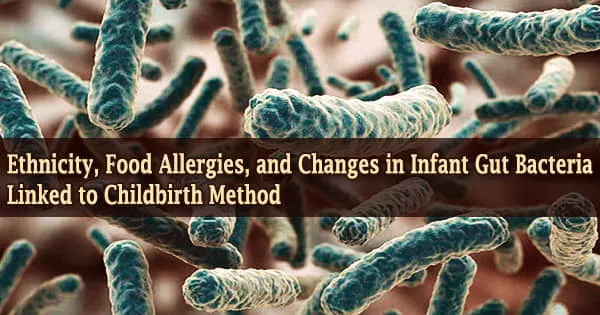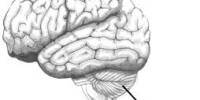In a recently published paper in the journal of the American Gastroenterological Association, researchers discovered a causal link between caesarean section birth, low intestinal microbiota, and peanut sensitivity in infants, and they report that the effect is more pronounced in children of Asian descent than in others.
“It’s important to know what predicts or increases the risk of food sensitivities because they predict which infants will go on to develop asthma and other types of allergies,” said Anita Kozyrskyj, pediatrics professor in the University of Alberta’s Faculty of Medicine & Dentistry and adjunct professor in the School of Public Health.
Food allergy is an inappropriate response to a food triggered by your body’s immune system. In adults, the foods that most typically induce allergy responses include fish, shellfish, peanuts, and tree nuts, such as walnuts. Eggs, milk, peanuts, tree nuts, soy, and wheat can all be problematic foods for youngsters.
The researchers examined fecal samples collected at three or four months of age and again at one year to examine the gut bacteria of 1,422 infants in the CHILD Cohort Study. They discovered four typical bacterial development pathways, including one in which the newborns had continuously low levels of Bacteroides, a bacteria type considered to be important for immune system development. This was the most prevalent profile among babies born via caesarean section.
Food allergies occur when the immune system, the body’s natural defense against infection, misinterprets food proteins as a threat. As a result, a variety of chemicals are discharged into the environment. The symptoms of an allergic reaction are caused by these substances. Although almost any food can produce an allergic reaction, the majority of food allergies are caused by a few foods.
At one and three years of age, the infants were given skin prick tests to determine their reaction to a variety of allergens, including egg, milk, and peanut. By the age of three, newborns with low Bacteroides levels had a threefold increased risk of acquiring a peanut sensitivity, and the risk was eight times higher for babies born to Asian mothers.
It’s important to know what predicts or increases the risk of food sensitivities because they predict which infants will go on to develop asthma and other types of allergies.
Anita Kozyrskyj
The researchers conducted additional statistical analysis to seek for “mediation” or causal effects between the exposure and the outcome.
“In this case we observed that there was an association between Asian ethnicity and peanut sensitivity, and then the mediation analysis provided additional evidence for the causal association with caesarean section,” explained Kozyrskyj, noting it is the first study to identify this link.
The majority of children who develop a food allergy had had eczema as a youngster. The more severe and resent the child’s eczema, the more probable they are to have a food allergy. Although they frequently have other allergic disorders such as asthma, hay fever, and eczema, it is still unknown why people develop food allergies.
Sphingolipids, proteins important for cell growth and signaling in many regions of the body, including the immune system, were also shown to be lower in newborns with low Bacteroides levels. These proteins are primarily obtained from the gut microbiota.
“Children who have this deficiency in their immune cells may be more likely to develop food allergies,” Kozyrskyj said. “As the gut microbiota are developing so is the gut’s immune system, training the gut to react to pathogens and to be tolerant of the food that we require,” she explained.
Food allergies impact half a million Canadian children, with peanut allergies affecting two out of every 100 children and causing severe anaphylaxis. According to the study’s authors, babies with food allergies are more likely to develop asthma, wheezing, eczema, and allergic rhinitis later in life.
“The overall rate of allergies is increasing in western countries and is likely linked to environmental factors,” said Kozyrskyj, who is principal investigator of the SyMBIOTA (Synergy in Microbiota) laboratory, which studies the impact of maternal and infant antibiotic use, birth mode and breastfeeding on the composition of the intestinal microbiota in infants.
“In China food allergies are uncommon, but those who immigrate to Canada face a higher risk and more severe form of allergic disease,” she said. “It’s likely related to a change in diet and environment.”
The results of the study will now be duplicated in other studies around the world, according to Kozyrskyj. Hein Tun, a former post-doctoral associate at the University of Alberta who is now an assistant professor of public health at the University of Hong Kong, was her principal collaborator. The Canadian Institutes of Health Research, Alberta Innovates, and the Allergy, Genes, and Environment (AllerGen) Network supported their research.
Kozyrskyj is a member of the Women and Children’s Health Research Institute. The Stollery Children’s Hospital Foundation and the Alberta Women’s Health Foundation, through the Women and Children’s Health Research Institute, are funding partners for the CHILD Cohort Study.
According to previous studies by Kozyrskyj and others, kids born through caesarean section do not receive the same beneficial microbiota transfer from mother to child as babies born vaginally. Studies looking to mitigate this by giving C-section babies probiotics or even swabbing them with their mother’s vaginal bacteria have not been as successful as hoped, Kozyrskyj said.
Unless medically essential, it is recommended to avoid caesarean birth. “With this evidence at hand, the parent and the obstetrician might choose a different birth mode,” she said.
















